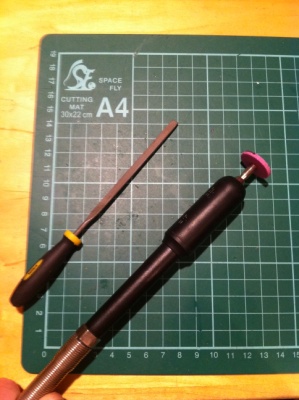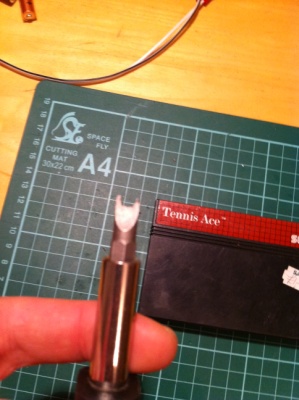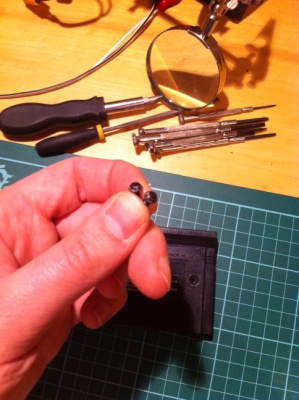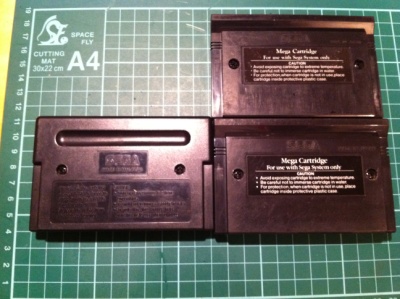In my previous post I tore apart a Famiclone aka NOAC (Nes On A Chip) with the grand name of Twin Lightblaster Joypad. Today I’ve gone further, by miniaturising and modding the circuit further to fit inside of a NES or Famicom controller.
I had to do three things:
– Get it running of off external power
– Cut the second D-Pad (bottom middle of the board)
– Wire connections for the controls
Running from external power was easy. I hooked up my variable bench power supply I’d recently built with an LM317 regulator (see this Afrotechmods video on YouTube) and set it to just under 6v. Switched it on. Bingo!
Next I followed the AV back up the board to where I could get a signal (a row of inductors), cut the second d-pad out, rewired and tested. First time I got a picture (see the multi ROM in the below picture). And it shrank the board by almost a third.
Next up: Buttons!
The thinking went: As the AV signal went past the D-pad, I could hook up on the same set of traces. It turned out even better, as the traces ran to the same set of inductors. I soldered these up using some cabling out of and old Ethernet Cat 5 cable, then grounded each, noting the colour and direction.
The Famicom, unlike the NES, only has Start and Select on the first controller (marked I), however this clone has those buttons on the second controller. Could I then hook up those buttons on the nice solder pads left when I desoldered the second port? Dabbing around with a ground wire, I shorted one of the pads and the whole thing died.
One thing I had noticed on this board in the tear down was the reverse polarity protection (a parallel diode and a fuse). Luckily it was only the fuse killed – jumping across it brought the thing back to life. A new one has been ordered from eBay.
To finish up, I soldered up to the button pads on the board directly. Then gave everything some thick glue gun glue and some insulating tape to keep everything secure and less likely to short.
And here’s where I left it:
Back of the board with AV and controls wired
 And the front of the board with Ethernet wires soldered on. The cut second D-pad on the right.
And the front of the board with Ethernet wires soldered on. The cut second D-pad on the right.
















